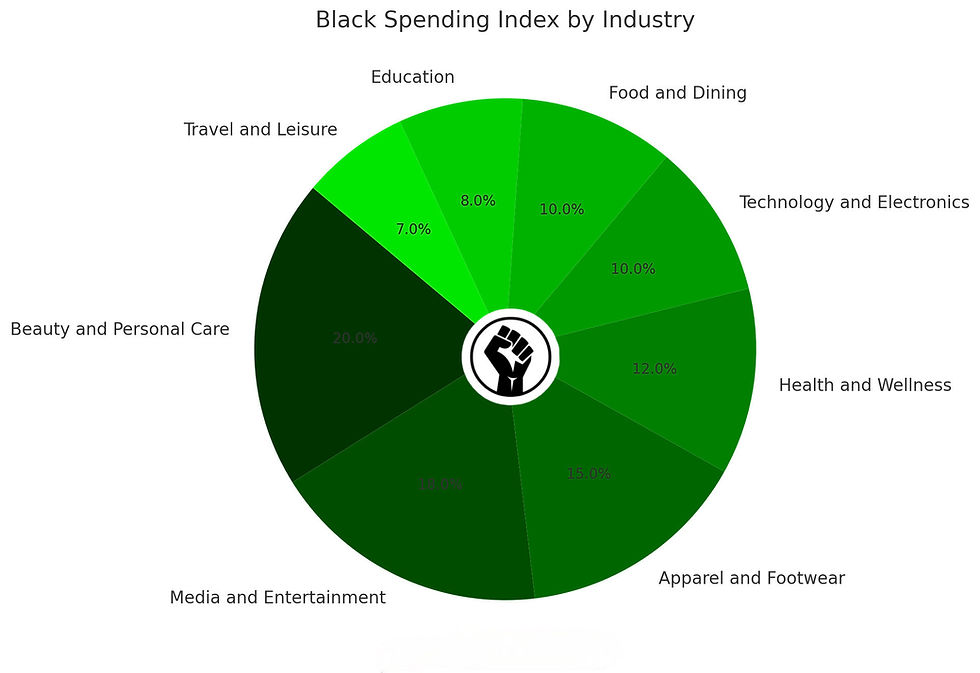A Fresh Perspective when Marketing to College Students
- Al Lloyd

- Jul 20, 2022
- 6 min read
Do not be affraid to make your soical media have an identity
Written by Al Lloyd for Consumer Behavior
Newfound freedom and responsibility
Taking time to get inside the minds of college students is a key part of understanding how to market to them. The move from High School to College denotes a major shift in lifestyle for the average student. The majority of students will move out of home when starting their new life at college, which brings a host of new responsibilities that these young adults must learn and master if they wish to properly thrive out of the nest. This newfound freedom and responsibility presents an opportunity for brands or businesses ready to identify how they can best help these young people to navigate this life change.
During their college years, students begin to recognize their purchasing power; setting trends and habits that will last a lifetime. Young people spend more time together than other social or professional groups, this makes influencing their consumer decisions a difficult challenge which can only be tackled with a well-planned, targeted marketing campaign.
Wariness of traditional marketing
Effective college marketing identifies the needs of this demographic and delivers a brand’s message in a timely, useful way. Whilst college students spend thousands of dollars over the course of their degrees, they are not easily swayed by traditional, interruption marketing. Studies have shown how 56% Gen Z will purposefully not click on ads whilst browsing websites, whilst 65% have gone as far as to install ad-blocking technology on their devices to stop seeing them altogether. Considering college students’ wariness of marketing messages is vital to delivering a brand message that will not simply be ignored on arrival.
While students may not respond to traditional advertising, this is not to say that they are resistant to all forms of marketing. Though students may have less expendable income than other groups, they still have discretionary money and are willing to spend it on brands that gain their attention and understand their values. Advertisements geared towards college students should be tailored to their values and be suitably attuned to their spending power and priorities.
Need for authenticity
So, how do you advertise to Gen Z college students when they don’t want to be advertised to? The answer is authenticity. The IBM Institute for Business Value (in conjunction with the National Retail Federation) conducted a survey of over 15,000 Gen Z people, to find out how they relate to brands and what they value most in these relationships.
Whilst the survey respondents were overall less likely to form brand attachments (compared to previous generations) they were still keen to engage with them, suggesting that a focus on creating authentic experiences could be the key to marketing to Gen Z college students. The study also noted how growing up in a media landscape consisting of ‘fake news’ and ‘alternative facts’ had led these young people to crave authenticity and transparency when conducting relationships with brands and businesses.
‘Convenience, on the go’
The average college student leads a hectic schedule that consists of many different activities in a given day. A survey conducted by HSBC highlights the multifaceted nature of a college student’s day and shows how important convenience is to this demographic. On average, a college student will spend 2.3 hours studying in class, 2.8 hours studying at home, 4 hours socialising and up to 4.2 hours a day doing paid work. Other than confirming what many parents might have already guessed related to the number of hours students actually work in a given day, these findings show just how busy a college student’s day is and demonstrates that in order for brands to get their message heard they need to find the best gap in this schedule in order for their message to be heard.
How much money do students spend?
To understand how to sell to college students its first important to understand where they spend their money. Student spending trends change every year. As priorities between year groups evolve constantly it can be a challenge to anticipate how and where the next cohort of college students will choose to spend their money.
Luckily for marketers looking to penetrate the student market, there is a wealth of data available online that has been collected by reputable financial businesses which gives insight into how college students spend their money. The majority of this data is taken from surveys, and although the sample sizes are large, these figures should be used as a starting point for marketing strategies.
HSBC’s Value of Education Study
Despite coming from higher socioeconomic backgrounds, the majority of college students will work in their spare time to support their education and their lifestyle choices. One question that brands and businesses considering marketing to college students will have is: where do they spend their money? A 2018 survey undertaken by HSBC, helps give us insight into how some college students are choosing to spend their money, shedding light on opportunities for businesses considering marketing to this demographic.
It should come as no surprise that, over the course of an average month, students spend the most on tuition fees and accommodation. However, it should also be noted that they also have no qualms in spending their hard-earned money recreationally. On average, they will spend over $5000 on various forms of entertainment during their college degree, not to mention over $4000 on eating out and takeaways. So, whilst college students will inevitably spend the majority of their money on necessities, they are far from shy when spending their money elsewhere too.
Deloitte Back-to-College Report
Each year Deloitte releases its Back-to-College Report, detailing where college students are planning to spend their money and, more importantly, how they prioritise certain offerings.
This year, students pointed towards pricing being one of their most important considerations when it comes to purchasing decisions. 91% of the recipients of this year’s survey held price as their number one priority, with 71% saying that discounts on prices will also influence their eventual decision
This should come as little surprise as, even though students spend in excess of $60 billion dollars each year, the cost of the average annual tuition fee is estimated at $33,215, a price that naturally puts the squeeze on other expenditures.
Making the effort to ingratiate your brand with these students today should be seen as a building block for your business’ future success. It’s estimated that the lifetime spending potential of college graduates is $1 million more than those who do not attain a college degree.
While current students may value a good price above everything else today, investing in marketing to this demographic should be seen as a long-term strategy to securing a valuable, lifelong relationship with a consumer group that will have considerably more spending power than those whose have not attended college.
How can you use the college life cycle to your advantage?
As with all marketing campaigns, timing is crucial to maximize audience engagement. By paying close attention to the rhythms of college life you can take advantage of the major marketing opportunities that pop-up throughout the academic year, effectively reaching college students at the point when they are most in need of your brand.
The ebb and flow of the college semester are permeated with major events that the student body will gravitate towards. From the back-to-school season to homecoming and college football season, these are perfect opportunities to engage students and promote your brand.
The relationship between the brand and your college consumer doesn’t stop at graduation. The transition into post-college existence is another key moment in a student’s life when their financial situations can potentially improve for the better and they find themselves making investments that could last them for much longer than just a single term.
At this point, students will need advice on applying for jobs, moving home, and learning how to adapt to the working world. Just like the beginning of their college experience, by being present at the end of their student lives, you can generate goodwill with consumers that will be entering a new phase of their life as spenders.
What are college students’ values?
Recognizing what these Generation Z students value can help to inform the development of your marketing strategy. By digging into how these college students see the world and the general opinions that they hold on social issues, brands can tailor their messaging and approach to better fit this demographic. While making wide generalizations about a group as large as this does have its limitations, by looking at survey results taken from both generational groups it’s possible to draw some insights as to the average college student’s beliefs.
Gen Z students value authentic experiences in every aspect of their lives from their online lives to their interpersonal relationships and their education. Rejecting the interruption advertising that has been the norm for decades, they seek content that is relevant to their needs and interests. Over 50% of Generation Z have ad blockers installed on their browsers. Similarly, Gen Z students are constantly seeking authenticity as a way to generate ‘greater freedom of expression and greater openness to understanding different kinds of people’, according to a recent report from McKinsey & Company.
The current American student body is a highly experimental, socially aware cohort that do not make purchases blindly. By paying attention to the value that they hold dear and tailoring your marketing strategy accordingly, you can avoid wasting time investing in ideas that are unlikely to resonate with this demographic.
How can you market to college students?
Don’t advertise in the local paper and TV
Sponsor college organisations
Target incoming students at orientations
Penetrate students’ space
Stand for something
Ditch the flyers
Visit classes
Create experiences with college event marketing
Student events and activations
Contests
Giveaways
Other free stuff
Off-campus experiential marketing
Use peer-to-peer marketing
College brand ambassadors
Sorority and fraternity marketing
College street team distribution
College student discount
Utilise cross-platform college marketing
Advertise on social networks
Encourage user-generated content
Video advertising
Speak to them in their voice
Works Cited
https://www.opploans.com/oppu/articles/are-college-millennials-responsible-with-their-parents-money/
https://robertkelchen.com/2018/05/28/a-look-at-college-students-living-arrangements/
https://p.corporate.myunidays.com/get-gen-z-decoding-the-digital-generation
https://nrf.com/sites/default/files/2018-10/NRF_GenZ%20Brand%20Relationships%20Exec%20Report.pdf
https://www.nielsen.com/us/en/insights/article/2013/does-college-play-a-role-in-media-consumption/
https://www.emarketer.com/Article/Millennials-Adept-Filtering-Ads/1012335
http://projects.thepostathens.com/SpecialProjects/behind-the-screens-time-spent-on-phone/index.html













Comments